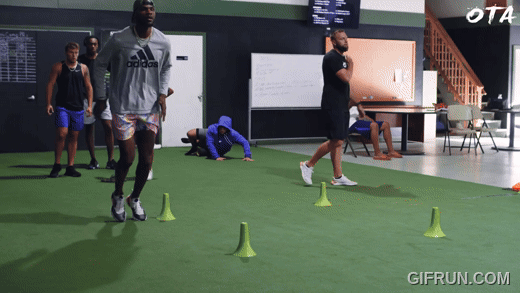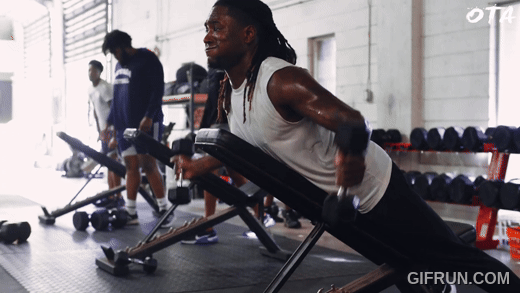Deload Parameters for Athletes: A Guide to Effective Recovery and Performance
Training at a high level of intensity is a crucial part of any athlete’s progress. However, what many athletes and coaches overlook is the importance of rest and recovery. While pushing hard is necessary to improve performance, doing so continuously without proper recovery leads to diminishing returns, increased risk of injury, and mental burnout. This is where deloading comes into play.
In this blog post, we’ll dive into the deload parameters for athletes, focusing on the definition, importance, timing, adjustments for various training types, and how to use deloads effectively to optimize performance.
What is a Deload and Why Is It Important?
A deload is a planned reduction in training intensity and volume over a set period, often lasting about a week. This phase is a critical part of an athlete’s training cycle, allowing the body to recover, repair, and rebuild after a period of intense training.
Over time, when athletes train at high intensities, their muscles, joints, and nervous system become increasingly fatigued. Without proper recovery, the body can’t fully adapt, which leads to stagnation or even regression in performance. The main goals of a deload are to restore muscle tissue, refresh the nervous system, and allow athletes to come back stronger and ready for the next phase of training.
Deloading also helps prevent overtraining syndrome—a condition where continuous training without adequate recovery leads to burnout, fatigue, and injury. By incorporating strategic deload periods, athletes can avoid this pitfall and enhance their overall progression.
When to Schedule Deload Weeks: The Timing of Deloads
One of the most crucial aspects of deloading is knowing when to incorporate it into your training program. Deloads are usually scheduled after 3-5 weeks of intense training. However, the specific timing depends on several factors, such as the training volume, intensity, and the athlete’s individual progress.
Factors to Consider:
- Training Volume and Intensity: If an athlete has been pushing through high-volume or high-intensity training, the nervous system and muscles will become heavily taxed. This is a sign that a deload is necessary.
- Training Phase: Deloads are typically scheduled at the end of a specific training block, like after an intense strength or hypertrophy phase, or after a period of intense skill work.
- Signs of Fatigue: If an athlete starts feeling fatigued, struggles with motivation, or experiences slight injuries or discomfort, it may be time for a deload week.
While it’s important to program deloads into the training cycle, the timing should be strategic and individualized. Athletes who are newer to training might require deloads less frequently, while elite athletes might benefit from more frequent deloads due to their higher training loads.

Adjusting Dynamic and Agility Work During Deloads
Dynamic exercises, including speed, agility, and plyometrics, are typically high-intensity and high-impact, meaning they place significant stress on the body. During a deload week, the goal is to reduce this impact to allow the body to recover while still maintaining movement patterns.
Key Adjustments for Dynamic Work:
- Regress Movements: Instead of performing high-intensity agility drills, like cutting or sprinting at maximum speed, regress these movements to low-impact variations. For example, athletes can perform lighter or slower footwork drills, focusing on speed and technique without the added stress.
- Reduce Jumping and Plyometrics: High-intensity plyometrics—such as box jumps, depth jumps, or broad jumps—can put significant strain on the joints and muscles. During deloading, these should be replaced with low-impact jumps or even skipped entirely.
- Low-Intensity Skills: While it’s important not to introduce new, unlearned skills during a deload, focusing on lighter drills, such as skipping or skipping drills, allows athle
tes to keep the muscles engaged without overstressing them.
The key during deloads is to avoid exercises that could overtax the nervous system, yet still maintain movement patterns that keep athletes sharp and ready to ramp up their training afterward.

Strength Training Adjustments During Deloads
Strength training, particularly compound movements like squats, deadlifts, presses, and pulls, can be extremely taxing on both the muscular and nervous systems. The main goal during a deload is to reduce the intensity of these lifts so that the body can recover without losing the benefits of training.
Key Adjustments for Strength Training:
- Reduce Intensity: During a deload, intensity should be reduced to 50-70% of the athlete’s one-rep max (1RM). For example, if an athlete’s max squat is 300 lbs, they should work with 150-210 lbs during the deload week.
- Maintain Volume: While intensity is reduced, volume can be maintained (e.g., 5 sets of 5 reps). This allows the athlete to continue performing the exercises without putting undue strain on their body.
- Focus on Technique: With the reduced intensity, this is an excellent opportunity for athletes to focus on refining their lifting technique, correcting posture, and improving form without the pressure of heavy loads.
- Avoid New Stimuli: Deloading isn’t the time to introduce new exercises or unfamiliar movements. Stick to the compound lifts that the athlete is used to but at a reduced load.
This reduction in intensity allows the muscles to recover while still providing enough stimulus to maintain strength and technique.

Recovery Focus and Auxiliary Work During Deloads
A deload is the perfect time to focus on recovery techniques that promote muscle repair and nervous system regeneration. It’s important to prioritize activities that help the body bounce back and prepare for the next intense training block.
Key Recovery Strategies:
- Auxiliary Work: During a deload week, focus on auxiliary exercises (single-joint or isolated movements) but reduce the intensity to around 70% of normal load. For instance, if you usually do bicep curls with 30 lbs, you could reduce the load to around 20 lbs.
- Low-Impact Resistance: Incorporating activities like sled pulls, which are low-impact and don’t involve eccentric muscle contractions (the lengthening of muscles), can help maintain muscle engagement without putting additional strain on the body.
- Mobility and Flexibility: Increase the focus on foam rolling, dynamic stretching, and mobility drills. These activities help to release tension in the muscles, improve flexibility, and increase blood flow to the tissues, which promotes faster recovery.
- Mental Recovery: Deload weeks can also be an opportunity for athletes to recover mentally. Training at a high level can be taxing on motivation and focus, so taking a break from intense workouts can help athletes return to their training with renewed energy and enthusiasm.
By adjusting auxiliary work and prioritizing recovery, athletes can return to training feeling refreshed and more resilient.

Conclusion: Maximizing Performance with Deloads
Deloading is a vital, yet often overlooked component of an athlete’s training program. Incorporating well-timed and structured deload weeks can prevent overtraining, enhance recovery, and ultimately lead to better long-term performance gains.
During deloads, it’s important to regress dynamic work, reduce strength training intensity, and focus on recovery strategies such as mobility work, sled training, and rest. By following these deload parameters, athletes can recover effectively while maintaining their physical and mental readiness for the next phase of training.
Remember, recovery is not the absence of work—it’s the smart, strategic approach that helps athletes achieve sustained progress over time!
